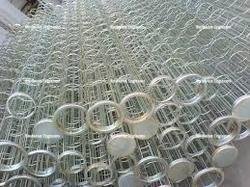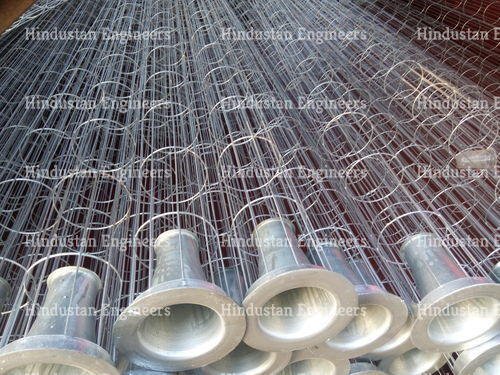Filter Bag-Cage

Filter bag cage also named dust collector cage is made of stainless steel or carbon steel with galvanization, silicon coating, epoxy or PVC vinyl coating finish. It is a kind of strong cage which works with filter bag to remove dust efficiently. This cage uses the advanced hot-melt jointing technology. The jointing method of bag bottom, side and collar ring all are hot-melt welded, that can avoid the pinholes from seam filter bag. Its construction consists of vertical and horizontal wire. The horizontal wire can be round, flat or envelop shape which is welded smoothly with vertical wire. So this cage shape can be round, flat, envelop. Besides, Its connection way can be clamp, chuck, claw join, guide plate connection. It is light and easy for installation and maintenance.

Pulse-jet style baghouses are designed to utilize fabric filter bags with internal support structures commonly referred to as cages. Baghouse Filter Cages provide a means of holding the filter bag open during the particulate collection cycle. Cages must be strong to withstand the pressure from the filter bag exerted during the particulate collection cycle.
Additionally, cages must be selected with the proper structure design to conform to the fabric requirements. Gas stream chemistry will determine whether special metals or special coatings will be required to reduce or eliminate corrosion to the cages’ metal surfaces. Cage sizes, both length and diameter, can be crucial to the success or failure of the filter bag.
The strongest filter bag cage for pulse-jet baghouses is known as the “rigid wire” cage. It is designed to provide uniform support to the overall length of the fabric filter, utilizing “stringer” wires that are equally spaced around the circumference of the cage. Each stringer wire is then welded to support rings that are spaced along the length of the cage. The diameter of these rings plus the wire gauge of the stringers determines the overall diameter of the cage. Special cage tops, such as roll band and roll flange styles, are also welded to the stringer wires; thereby developing a strong internal assembly from which to attach the cage and filter bag to the baghouse tubesheet. The cage bottom is either interlocked to a stringer ring or welded to the stringers. Either method is equally sufficient for support.
The number of stringers used in cage construction depends on the applicable requirements and fabric used for the filter bag. 10, 12, and 20 wire stringers are the standards. 10 wire stringers are usually used on heavier weight felts. 12 wire stringers are usually used on lighter to medium weight felts. 20 wire stringers are usually used on fiberglass fabric filters and other media that require maximum support, thereby reducing the excessive flexing of the fabric yarns that usually causes premature bag failure.
